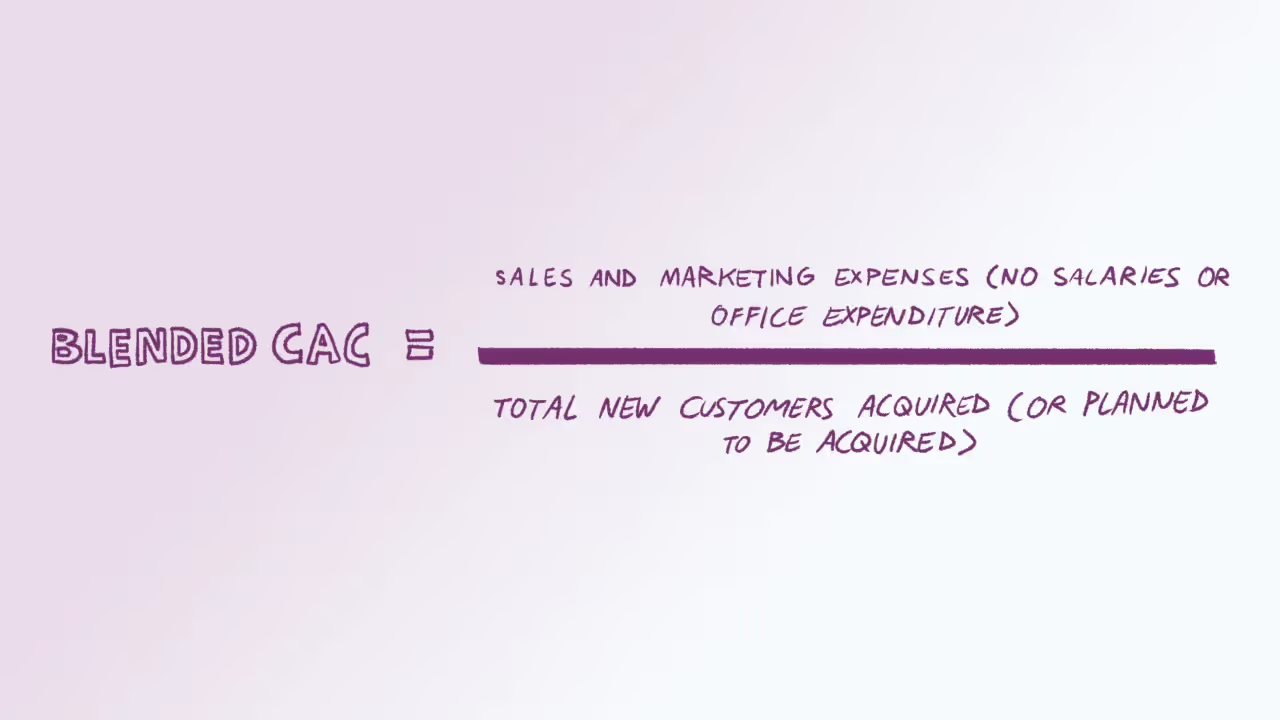Introduction
A solid marketing budget is key to supporting the overall growth of your business but if you’re struggling to understand where to focus your marketing spend, you are not alone! Creating a marketing budget that works for your business goals is tough. But don’t worry, we’ve got you covered. In this article we’ll offer expert advice on how to effectively calculate a startup marketing budget, helping you avoid overspending and achieve your business objectives.
What is a Marketing Budget?
Marketing budgets outline the money a company intends to spend on marketing its product including everything from advertising and content marketing to necessary marketing tools and subscriptions.
How much should you spend on marketing?

Working out how much you should spend on marketing is like asking someone how long a piece of string is - there is no right or wrong answer. For the most part it depends on your annual income and the age of the company. Typically companies under five years old spend between 12-20% of their revenue on marketing while companies over five years old (assuming they have some level of market share) tend to spend between 6-12%.
Depending on the size of your company you can calculate your revenue by working out your gross revenue (i.e. your total number of sales over a specified period) or your estimated revenue (i.e. how much you are likely to make over a specific period of time). Given most start-ups allocate an average of 11% of their revenue to support their marketing efforts we recommend you do the same. However it is worth remembering that B2C companies may wish to budget more for marketing than a B2B business.
How to determine Marketing Expenses
Once you have roughly calculated your total marketing budget based on the method outlined above it’s time to allocate it. That means working out how much money you need to support employee salaries, marketing tools, paid marketing and freelance talent - all before you even consider the content of your marketing message.
Salaries
The first thing you should do when allocating your marketing budget is set aside a sum of money to cover the salaries of any full-time marketers you have or are in the process of hiring. Remember spending money on great marketing talent will help to ensure you get the most out of your marketing budget.
If you need any advice on how to build your dream marketing team, we’ve created the ultimate guide to start-up marketing to help you get started.
Tool Subscriptions

When it comes to achieving your marketing goals there are a number of annual subscriptions that should be accounted for as part of a marketing budget like HubSpot and Marketo. These all-in-one tools help marketers keep track of every lead, prospect interaction and page view, making it easy to analyse and assess performance throughout the year. Additional tools to support specific marketing roles and responsibilities such as those outlined below should also be accounted for from the offset.
- Social media marketing tools like Later
- SEO tools such a Frase
- Email marketing platforms include Mailchimp
Freelancers & Agencies

As well as allocating money to support full-time employees you will also need to set aside a budget to support freelancers or agencies. While they may not be immediate hires they are likely to be key to the growth of your business at various points throughout the year ahead. For example, if you need support with effective content marketing you may look to hire a freelance copywriter, SEO specialists and/ or social media whizzkid. Taking the time to think about the types of agencies and freelancers you’re likely to hire ensures you set aside enough budget to make it happen when the time comes.
As a start-up hiring freelance talent makes sense as it offers you instant access to some of the world’s most-talented marketers without the same financial requirement posed by full-time members of staff. If you’re interested in learning more about hiring freelance marketers, make sure you give our blog post on what to look for when hiring marketing talent a read.
Paid Media Spend
If you want to run paid media ads make sure you allocate a significant proportion of your marketing budget to support this type activity. While paid marketing is arguably one of the best ways to expedite acquisition, it is also one of the most expensive. On average most start-ups spend around 20% of their marketing budget on paid activity (e.g. Google Adwords). Getting this part of your budget right requires a lot of work so make sure you have the right resources and talent in place to execute effectively.
“It can be tempting to focus your marketing budget on activities with the fastest results and clearest attribution - i.e. paid search or social. But part of your budget should always be given to activities with longer term yields like social media and SEO.” — Duncan Coleman, Passionfruit Specialist
The number one tip to make your money go further

Like most first time founders we’re guessing you want to try and be everywhere at once to avoid missing valuable opportunities? While it’s tempting to go all out it’s important you prioritise specific channels when it comes to making your marketing budget go further. Instead of championing multiple different channels and campaigns try to focus your efforts on optimising the marketing channel that is growing your business. If it’s not immediately obvious, encourage your team to A/B test specific messages and visuals with different audiences until they find out where to focus the marketing spend. Working out where you are likely to see future growth early will enable you to better allocate your marketing budget, ensuring your business grows from strength to strength - and fast. In short, you want to build habits that scale.
“My advice for startups is to focus all your efforts and money on one channel at a time. You can focus on developing other channels as your business grows. Find the fastest and most efficient way to break through and get more business first.” — Raffi Salama, Co-Founder, Passionfruit
If you do choose to prioritise more than one marketing channel try to make sure they compliment one and other. For example, SEO is a great tool to support content marketing as you can create engaging content using keywords while also using SEO to drive people to your product. Strategies that allow you to reuse carefully curated content are also worth pursuing as they can help you engage with your target audience while keeping marketing costs down.
That said, if one of the marketing channels you are pursuing doesn’t show signs of growth don’t be afraid to move on - even if it once worked wonders.
Calculating CAC
Paying attention to your return on investment (ROI) is key when it comes to identifying any shortcomings in your marketing efforts. Calculating your customer acquisition cost (CAC) is the best way to do this as it allows you to regularly review the success and efficiency of your marketing strategy. Helping you determine whether or not your marketing budget is being allocated effectively.
You can work out your customer acquisition cost by taking the cost of your sales and marketing efforts over a specific period of time and dividing it by the number of customers acquired during the same time period. By adopting a data-driven approach like this, you’ll be able to make more informed decisions.

Other tips to make your budget stretch

Hire freelancers
Finding, hiring and onboarding a freelancer is a much faster and more efficient process than hiring a full-time member of staff. In most cases, you can begin to start work with a freelancer after only a few days.
As we mentioned earlier in this article freelancers also offer companies immediate expertise to support specific business objectives or projects. The more experienced a freelancer is, the more value they bring to the job at hand. Hiring experienced freelancers is a great way to increase the flow of ideas and introduce different ways of thinking, paving the way for better solutions and greater innovation. They’re also extremely flexible, meaning you can hire them to support specific short-term projects without having to worry about the overheads associated with full time employees. Win, win if you ask us!
If you’re looking to hire freelance talent, read our blog post on how to hire freelancers. Here you’ll find tips on what to look for when hiring and where to find the best freelance talent, starting with, you guessed it, Passionfruit.
Define your Quarterly budget in detail
Once you have calculated your annual marketing spend (remember it’s typically around 11% of your total or expected annual revenue) it’s important you take the time to define your budget in detail. That means knowing exactly how much money you’re spending and what you’re spending it on. Doing this allows you to allocate your budget, aligning it with your business goals and marketing strategy for the upcoming quarter (and beyond). By focusing your attention on your spending over a three month period helps to ensure you constantly review the effectiveness of your marketing expenditure, helping you to make the right decisions. It can also make it quick and easy to identify any over-spending and poor strategy decisions.
Creating a detailed marketing calendar outlining all major marketing campaigns and activity for the months ahead can also help you achieve this. Not only does it allow you to quickly and clearly identify key dates and costs, it ensures you spread them throughout the year, making sure you don’t spend your entire budget at once. As part of this process you may wish to conduct some competitive research to see how similar businesses allocate their spend or pick up with the product team to identify any areas they think would benefit from increased marketing spend.
“Always remember to update your marketing budget on a quarterly basis. It’s important you revisit it regularly and make any necessary changes, especially when there are strategic shifts in the business and/ or market.”
Conclusion
A clear marketing budget can help you grow your business from strength to strength. To succeed in determining and allocating your budget effectively you need to create a team that can accurately track expenses and identify areas for future growth.







